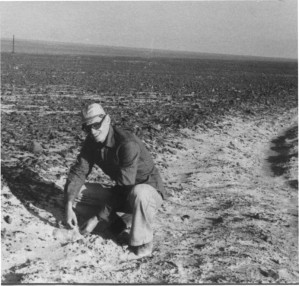Basques
Pre-Columbian America
Pre-Columbian America continues to generate books and articles at an ever-increasing rate, fed by dramatic improvements and discoveries in many sciences. Nevertheless, the resulting theories still range from the serious to the silly.
This compilation has frequently touched on the subject pre-Columbian America as a number of Atlantis related theories have proposed what are only peripheral connections with America, although in the immediate aftermath of America’s rediscovery, some European commentators were content to designate America as Atlantis itself.
Since then a range of claims have been made as to the identity of European visitors to America, often long before Columbus, sometimes with an underlying suggestion of nationalism. Richard Callaghan, an archaeologist at the University of Calgary, In the June 2015 issue of the journal Antiquity, “presented the results of computer simulations of 1,200 voyages of small boats drifting with the currents from northern Africa to the Americas. About 82 percent of Callaghan’s simulated boats made landfall in the Americas, many in 70 to 120 days. Since watercrafts have been around for at least 8,000 years, Callaghan says there could have been a “significant number” of successful pre-Columbian voyages to America.” Another archaeologist, Bradley T. Lepper, ironically writing in the Columbus Dispatch, rejected Callaghan’s data as evidence(l).
John L. Sorenson writing in the Journal of the Book of Mormon Studies(m) identifies evidence for transoceanic exchanges of 98 plant species, including tobacco and peanuts! I assume that he was driven by a very different agenda.
The weight of evidence so far favours the idea that most of the earliest pre-Columbians came from Asia either by sea or over what is now the Bering Strait. See the Arysio Dos Santos article(a) about Americas peopled by from an Asian Atlantis.
The online World History Encyclopaedia outlines the prehistory of North America from 40,000 BC when the Paleo-Indians arrived until 8,000 BC(i). Of course this statement begs the question – where did they come from?
The discovery of further early trans-Atlantic links was announced in February 2012(n) by two archaeologists, Professors Dennis Stanford & the late Bruce Bradley, in a newly published book – Across Atlantic Ice [1516]. Their claim is based on ‘Solutrean’ tools recently found in Delaware and five other east coast sites dated between 26,000 and 19,000 years ago. They offered “archaeological and oceanographic evidence to support this assertion, the book dismantles the old paradigm while persuasively linking Clovis technology with the culture of the Solutrean people who occupied France and Spain more than 20,000 years ago.”
In 2014, Stephen Oppenheimer endorsed the work of Stanford and Bradley(s).
However, a sceptical view of their work should also be read(o). However, by 2016 the Soultrean Hypothesis had been contradicted by genetic studies(p). Nevertheless, a recent documentary on the hypothesis has raised some controversy, as the program failed to refer to the use of the Soultrean Hypothesis by white supremacists(q). Jennifer Raff, who appeared in the documentary, has also rejected the Stanford & Bradley theory in a new article(r).
In 2014 Michael J. O’Brien et al published another critical review of Stanford & Bradley’s theory on the Researchgate website and added a response from Stanford and Bradley(t).
Finally, I suggest that there may be more to Stanford & Bradley’s theory, when combined with the story of the Red Paint People.
Harry Bourne is the author of a series of lengthy papers(c) relating to African maritime history. Until I read some of his work I was unaware of the subject, with the only suggestion of Africans voyaging to the Americas was the existence of the mysterious Olmec stone heads. Bourne advised(d) that Columbus noted “that blacks were also trading on the far side of the Atlantic in the Caribbean”, but does not cite the reference.
Similarly, “According to renowned American historan and linguist Leo Weiner of Harvard University, one of the strongest pieces of evidence to support the fact that Black people sailed to America before Christopher Columbus was a journal entry from Columbus himself. In Weiner’s book, Africa and the Discovery of America, he explains that Columbus noted in his journal that the Native Americans confirmed ‘black skinned people had come from the south-east in boats, trading in gold-tipped spears’.”(x)
This whole subject could fill a library of its own and in no way is this entry intended to be a substitute for a comprehensive study of pre-Columbian America.
With their understandable Eurocentric view of the world a variety of commentators have advocated a range of pre-Columbian visitors to the Americas from this side of the Atlantic . There are a wide range of claims suggesting that such contacts included the Ten Lost Tribes of Israel, the Sumerians, the Hyksos(v), the Sea Peoples(u), the Phoenicians, Egyptians(k), Ancient Greeks(y)(z), Minoans(j) and Romans(b)(e)(f). After that, there appears to have been an endless parade of transatlantic tourists proposed – Basques(g) , Scots [1769], Irish [2086] and Vikings [1824].
>>Dr. Youssef Mroueh has claimed that Muslims reached America just over 1000 years ago(aa). Other academics such as Dr. Yahia Zeghoudi(ab) and Professor Ken Chitwood(ac) have also published papers supporting this contention. However, Professor Richard Francaviglia offers a much more sceptical view(ad).<<
There is also a suggestion that Marco Polo visited America before Columbus(h) .
No investigation of early visitors to America should ignore the work of the controversial epigrapher Barry Fell, particularly his two books, America BC [1769] and Saga America [1770]. However, the more critical reviews of Fell’s work should also be read(w).
(a) Atlantis in the New World. – Atlan.org
(b) Ancient Romans May Have Discovered Americas Before Columbus | Gaia
(c) Black History WEB – African Maritime History Archive (50webs.com)
(d) West Africa & The Sea In Later Antiquity: Short intro. & plan (modernghana.com) (4/5ths down page)
(e) http://mexicolesstraveled.com/comalcalco.html
(f) http://www.andrewcollins.com/page/mysteries/deccott.htm
(g) https://www.archyde.com/did-the-basques-arrive-in-america-before-columbus/
(h) https://www.dailygrail.com/2014/09/did-marco-polo-discover-america-in-the-13th-century/
(i) Pre-Colonial North America – World History Encyclopedia
(j) Minoans have been to America before Columbus (bristolgreeks.com)
(l) Bradley T. Lepper The Columbus Dispatch • Sunday September 20, 2015
(m) https://scholarsarchive.byu.edu/cgi/viewcontent.cgi?article=1383&context=jbms
(u) Earth is my witness… Sea peoples reached Mesoamerica – COGNIARCHAE
(v) (99+) PLUTARCH, THE OLMECS & THE HYKSOS SETTLEMENT OF AMERICA | The Mumble – Academia.edu
(y) https://www.academia.edu/9066795/Did_the_Mapuche_of_Chile_travel_from_Homeric_Age_Greece
(z) https://www.academia.edu/32921347/ANCIENT_GREEKS_TRAVELLED_WORLDWIDE
(az) Pre-Columbian Muslims in the Americas | islam.ru *
(ab) (99+) Pre-Columbian Islamic Presence in the Americas (academia.edu) *
Le Flem, Michael
Michael Le Flem is an independent researcher and adjunct professor of history and philosophy. He is also the author of Visions of Atlantis published in December 2022.>>In February 2024, he was selected as Author of the Month on Graham Hancock’s website(b).<<
He begins by firmly placing the Atlantis story around 9600 BC, a date which you should know both archaeology and commonsense find totally unacceptable. But unfortunately, it gets worse when Le Flem proceeds to recruit Edgar Cayce as an authority on Atlantis, quoting liberally from his ‘readings’ and devoting over half the book to Cayce’s utterances on the subject, using seemingly endless quotations. Cayce’s name is mentioned 310 times, Plato’s 162 times, (actual quotes. Cayce 54 – Plato 13).
.Not content with that, he drags in the writings of Frederick Spencer Oliver, Rudolf Steiner and other theosophers to justify acceptance of Cayce’s ‘revelations’. I have pointed out elsewhere the unreliability of channelled information as well as question marks over the source of Cayce’s messages.
Le Flem frequently attacks Jason Colavito’s scepticism, which, at least, is usually based on more rational scientific grounds than Le Flem’s ideas. ‘Visions’ includes a few minor errors of fact. My final gripe is that the book lacks an index.
In January 2023, Le Flem had a chapter from ‘Visions’ published as an article on the Ancient Origins website(a) in which he puts forward the idea that the Azores might have been the location of Atlantis, although such a possibility was never suggested by Le Flem’s hero, Edgar Cayce. Before advocating such an idea Le Flem should explain how and why an Atlantis in the middle of the Atlantic would contemplate an attack on Athens which is around 4,500 km away with the primitive log boats or rafts which is just about all that was available in 9600 BC!
Overall, this book is worthless for anyone hoping for a science-based resolution to the Atlantis mystery. However, occultists will probably love it.
Görlitz, Dominique
Dominique Görlitz holds a doctorate in biogeography. As an experimental archaeologist, for many years he has been studying the
ability of prehistoric and early historical cultures to spread. He gained international recognition for his ABORA reed boat expeditions(a).
Unfortunately, he also received unwanted international attention when he and his associate, Dr Stefan Erdmann, were accused of damaging and removing artifacts from the Pyramid of Cheops(b).
>His interest in pyramids led him to study the pyramidal structures on the island of Pico in the Azores, following which. in 2014, Dominique Görlitz gave a lecture on the Pico pyramids(f). Related to this, is an article on the Atlantisforschung website regarding the debate between Nuno Ribeiro and Portuguese archaeologists regarding the authenticity of the structures as pyramids(g).<
In 2013, Görlitz published a report of his investigation of the Bosnian pyramids in which he concluded “that at least the Great Pyramid of the Sun and the lesser Pyramid of the Moon are not the archaeological remains of an unknown civilization.”(e)
Dr Görlitz has also studied the cart ruts found in Sardinia(c). Images of these ruts can also be seen in a YouTube video(d).
>What I consider his most extreme suggestion is the claim that the Basques had crossed the Atlantic and influenced the culture of the Toltecs of Mexico in a two-part article for Atlantisforschung(h). “In addition to the well-known cultural parallels between the peoples of the Old and New Worlds, many Native American cultures have old myths about foreign culture bringers that relate to the beginnings of their culture and agriculture.”<
(a) https://en.wikipedia.org/wiki/Abora_(expeditions)
(c) On the trail of the Cart Rut mystery – Atlantisforschung.de (atlantisforschung-de.translate.goog)
Caucasus Mountains
The Caucasus Mountains lie between the Black and Caspian Seas and contain the highest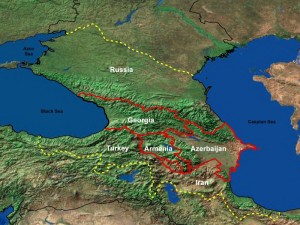 mountain in Europe, Mount Elbrus (Russia). In ancient times it was the location of several kingdoms of whom two were known as Albania and Iberia.(d)>Today, they contain a small part of the Russia Federation along with the former Soviet republics of Armenia, Azerbaijan and Georgia.<
mountain in Europe, Mount Elbrus (Russia). In ancient times it was the location of several kingdoms of whom two were known as Albania and Iberia.(d)>Today, they contain a small part of the Russia Federation along with the former Soviet republics of Armenia, Azerbaijan and Georgia.<
>Delisle de Sales was probably the first to suggest the Caucasus as the home of the original Atlantis, with refugees from there establishing Plato’s Atlantis in the Central Mediterranean. However, the greatest proponent of the Caucasus location for Atlantis was R.A. Fessenden who wrote, The Deluged Civilisation of the Caucasus Isthmus, an extensive multi-volume work [1012] on the subject published early in the 20th century.<
>Regarding the Pillars of Herakles being in the Caucasus Fessenden noted “The fact that Nebuchadnezzar, after reaching them in his northern expedition, next went to the north shore of the Black Sea and to Thrace; and that Hercules, coming back from the pillars with the cattle of Geryon, traversed the north shore of the Black Sea (see Megasthenes, quoted by Strabo and Herodotus, 4.8), puzzled the ancient geographers because they thought that the Pillars were at the straits of Gibraltar. And because they had overlooked the fact that the Phoenicians of Sidon had known that the Pillars had been lost and that the Phoenicians had sent out four expeditions to look for them but had reached no conclusion from these expeditions except that the straits of Gibraltar were not the true Pillars of Hercules.” See Strabo, 2.5 (m)<
More recently, Ronnie Gallagher, an admirer of Fessenden, has studied the Caucasus region, in particular, 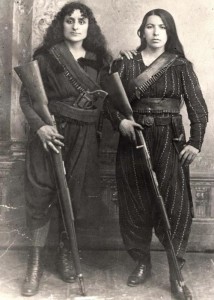 the hydrology of the Caspian Sea(a), where he identified strandlines up to 225 metres above sea level (ASL), which he considers to be evidence of a vast inland Eurasian sea at the end of the last Ice Age. In Azerbaijan, he also found cart ruts similar to those on Malta as well as stone circles on the Absheron Peninsula(b). Professor E. N. Badyukova has offered some critical comments regarding Gallagher’s claims(k).
the hydrology of the Caspian Sea(a), where he identified strandlines up to 225 metres above sea level (ASL), which he considers to be evidence of a vast inland Eurasian sea at the end of the last Ice Age. In Azerbaijan, he also found cart ruts similar to those on Malta as well as stone circles on the Absheron Peninsula(b). Professor E. N. Badyukova has offered some critical comments regarding Gallagher’s claims(k).
Flinders Petrie also referenced Fessenden in his (1926) paper The Origins of the Book of the Dead(f), in which he concluded “that the cultural connections of the earliest Egyptians, as well as the physical descriptions in their mythology, point to the Caucasus region. When, further, we find there the names of the principal places of the mythology in their relative positions, it gives strong grounds for regarding that region as the homeland of the earliest civilisation of the Egyptians.”
A few years later, an article by Margaret A. Murray in Antiquity (Volume 15 – Issue 60 – Dec. 1941) noted that Petrie’s “opinion was based entirely on literary and philological evidence” resulting in archaeologists being slow to accept it. To partially counter this Murray offered two pieces of evidence in support of Petrie’s proposed Egyptian-Caucasus connection.(i)
However, I must point out that in 1874 Hyde Clarke delivered a paper to the Royal Anthropological Institute in which he claimed that the Colchians in the Caucasus had been an Egyptian colony(h). Clarke also employed language similarities>and Herodotus’ Histories (Bk2.102-106)< to support his contention. So we can reasonably ask, who was right or were both Clarke and Flinders Petrie wrong?
A forum on Graham Hancock’s website offered some more discussion about an Egyptian link with the Caucasus(j).
Jean-Michel Hermans has claimed that the megalith builders of Brittany originally came from the Caucasus, and arrived there after a stop in what is now Bulgaria around 5000 BC(l),>and while there, they discovered mathematical relationships such as ‘pi’ and the ‘golden ratio’ !<
The Amazons of Greek mythology are thought by some to have originated in the Caucasus and as late as 1671, Sir John Chardin reported that a tribe of Amazons existed in Georgia. Interestingly, a 19th-century photo shows two armed ladies from Armenia captioned as ‘Amazons of Armenia 1895’.
An added mystery was offered by Alexander Braghine, who recounted that “I was present when a former Russian officer of Georgian origin found himself able to talk with the natives of Vizcaya immediately upon his arrival in Northern Spain: he spoke Georgian, but the Basques understood this language.” [156.187]
Currently, Bruce Fenton has claimed the Caucasus as the home of giants. However, Jason Colavito has demonstrated the unreliability of his claims(c).
In the Krasnodar region of southern Russia hundreds (actually 3,000 and counting) of dolmens are to be found on both sides of the Caucasus. Interestingly, they show a distinctive form of megalithic architecture(g).
I feel that the Caucasus will have a lot more to tell us.
(a) Wayback Machine (archive.org)
(b) https://www.azer.com/aiweb/categories/magazine/ai103_folder/103_articles/103_cart_ruts.html
(d) https://en.wikipedia.org/wiki/Caucasian_Albania
(f) Archive 6947 | (atlantipedia.ie)
(g) The mysterious dolmens and megaliths of the Caucasus – The Tapestry of Time (larazzodeltempo.it)
(h) https://www.jstor.org/stable/pdf/2841305.pdf
(i) Antiquity, Vol. 15, Issue 60, Dec. 1941 p.384-386
(j) New article: Observations on Late Pleistocene Flooding of the… – Graham Hancock Official Website
(k) Archive 7221 | (atlantipedia.ie)
(l) Amazon.fr
Dodson, Frederick
Frederick Dodson is the author of Atlantis and the Garden of Eden[0989] and has published a number of
excerpts from it on his website(a). These deal with, the Basques, Berbers, Etruscans, Minoans and Guanches among other subjects. He also includes a commentary on ancient maps(c).
He has devoted much space in his book and his website to the mystery of very large megaliths, such as at Baalbek and the unfinished obelisk at Aswan(d).
What I read seemed fairly standard fare, but then in a second book[1657], he advanced into ‘ancient astronaut’ territory, at which point I parted company with him.
Even more hilarious is his The Pleiades and Our Secret Destiny[1658] in which he tells the story of his encounters with blue-skinned beings from the Pleiades!
Dodson is also self-promoted as a ‘reality creation’ coach(b). Hmm.
(a) https://www.ancient-atlantis.com/ (offline October 2017)
(b) https://www.realitycreation.org/
(e) https://www.realitycreation.org/ancient-aliens-of-atlantis/
De Folin, Léopold (i)
Alexandre Guillaume Léopold, Marquis de Folin (1817-1896) was a French oceanographer and malacologist.  Apparently his study of molluscs and in particular some species of land snails in the western Pyrenees led him to speculate[925] that they may have been introduced into the region by the ancestors of the Baques who came from Atlantis(a) .
Apparently his study of molluscs and in particular some species of land snails in the western Pyrenees led him to speculate[925] that they may have been introduced into the region by the ancestors of the Baques who came from Atlantis(a) .
(a) https://www.eusko-ikaskuntza.org/en/publicaciones/colecciones/monografias/eusko/articulo.php?o=14556 (offline Mar.2017)
Hirmenech, Hans-Pény
Hans-Pény Hirmenech was the author of a 1906 book[1221], in French, in which he reviewed possible connections between the Celts, Basques and Atlantis. He claimed that Atlantis had been situated in the North Sea and that Helgoland was a remnant of it.
Hirmenech expressed the wild idea that the rows of standing stones at Carnac marked the tombs of Atlantean soldiers who fought in the Trojan War!
>>Stelios Pavlou informs us that “Hirmenech asserted that the capital of Atlantis was Men or Menes, but gave no sources for this. He argued that Atlantis was in the North Sea, and that Heligoland is a remnant of it. His theory claims that there are dolmen routes leading through southern England, northern Germany and western France, all leading to this site. Hirmenech also made comparative studies of the religions of the ancient Egyptians, Phoenicians and other ancient cultures to identify the cognates of deities who may have been worshipped on Atlantis.” (b)<<
Hirmenech was a founding member of la Société Préhistorique Française (The Prehistoric Society of France)(a).
(a) https://www.prehistoire.org/
(b) https://atlantisforschung.de/index.php?title=Hans-Peny_Hirmenech
Columbus, Christopher
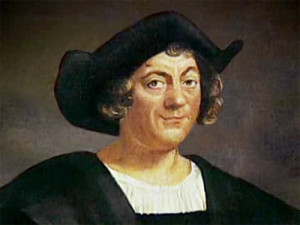 Christopher Columbus (1451-1506) is the name usually associated with the ‘discovery’ of America in the late 15th century. However, there appear to be a number of questions now being raised about the discoverer’s identity. Manuel Rosa seems to be leading the charge with his 2016 book, Columbus: The Untold Story[1889]. In a more recent article, Rosa succinctly claimed that “Historians mixed up the noble navigator Colón with the peasant weaver Colombo, giving the wool-weaver the glory that did not belong to him.” The article describes a convoluted but fascinating story of forgery, mistaken identity and misinformation that is well-documented and deserves a read(d).
Christopher Columbus (1451-1506) is the name usually associated with the ‘discovery’ of America in the late 15th century. However, there appear to be a number of questions now being raised about the discoverer’s identity. Manuel Rosa seems to be leading the charge with his 2016 book, Columbus: The Untold Story[1889]. In a more recent article, Rosa succinctly claimed that “Historians mixed up the noble navigator Colón with the peasant weaver Colombo, giving the wool-weaver the glory that did not belong to him.” The article describes a convoluted but fascinating story of forgery, mistaken identity and misinformation that is well-documented and deserves a read(d).
Columbus’ nationality is the subject of ongoing controversy although the majority accept him as Italian as there documentary evidence that he was born in Genoa. Pedants argue that as Italy did not exist as a state until the 19th century he cannot be called Italian. Up until then it was known as the Republic of Genoa (1099-1797). Apart from that, both Spain and Portugal have claimed that he belonged to their respective nations(f).
>Nevertheless, in 2024, it was revealed the matter of Columbus’ background to be even more complex, with the claim that based on a new DNA study on his 500-year-old remains it was found that the controversial explorer was actually a Sephardic Jew from western Europe(i). Unsurprisingly, these claims were swiftly challenged(j).<<
Ruggero Marino the author of Christopher Columbus: The Last Templar [1915], claims that he has evidence that Columbus’ first trip to the Americas was in 1485 for Pope Innocent VIII, not the better-known voyage for Ferdinand & Isabella of Spain in 1492(e)!
Columbus is not known to have made any specific statements regarding Atlantis, but some commentators have suggested that he was not only aware of Plato’s story but had consulted charts, such as Toscanelli’s(a), that depicted a mid-Atlantic island. López De Gomara was insistent that Columbus had read Plato’s Timaeus and Critias, while the historian, Bartolomé de las Casas (1484-1566), claimed that Plato’s story inspired Columbus to embark on his voyages of discovery!
A chart created by Paolo dal Pozzo Toscanelli (1397-1482) is also claimed to have been used by Columbus. However, the authenticity of the chart and associated correspondence was challenged by Henry Vignaud in a 1902 book(h), The Letter and Chart of Toscanelli[2091], which, understandably, generated considerable controversy(g) .
Toscanelli’s chart shows Antillia as a halfway marker from Portugal to Cipangu (Japan), which Columbus erroneously thought could be found on the other side of the Atlantic!
In the third chapter of The Message of Atlantis[494], Roger Coghill offers a vivid account of the background to Columbus’ protracted efforts to get support for his great voyage of discovery.
It is claimed that two of Columbus’ ships were built by Basques and that a quarter of their crews were Basque(b).
Nevertheless, S. P. Kershaw[1410.163] quoting from B. Keen[1500] notes that Columbus’ son Ferdinand ”explicitly stated that his father never showed any interest in Plato’s tale.”
The Flem-Aths in their Atlantis Beneath the Ice, which is a 2012 revised version of When the Sky Fell, begin the book with a reference to a memorandum sent by Charles Hapgood to President Eisenhower. In it, Hapgood sought the president’s assistance in locating a map used by Columbus, which he believed to still exist in Spanish archives. This map(c) was apparently one of a number used by Piri to produce his famed Piri Reis Map, which allegedly depicts an ice-free Antarctica. The Columbus map was not found.
(a) https://es.wikipedia.org/wiki/Archivo:Toscanelli_map.jpg
(b) https://www.quora.com/Is-it-true-that-Ancient-Greeks-knew-about-the-existence-of-America?share=1
(c) Saudi Aramco World : Piri Reis and the Columbus Map (archive.org)
(e) Atlantis Rising magazine #29 http://pdfarchive.info/index.php?pages/At
(f) https://www.thinkinitalian.com/was-christopher-columbus-italian/
(g) Catholic Encyclopedia (1913)/Paolo dal Pozzo Toscanelli – Wikisource, the free online library
(i) Christopher Columbus was secretly Jewish, new DNA study reveals (msn.com) *
Elefant, Roger
Roger Elefant is a French writer who has written (only in French)
on a range of ‘New Age’ subjects – Mu, hollow earth, UFO’s, the Ica Stones etc., etc(a). His books appear to be mainly a mish-mash of other writers ideas with Robert Charroux and Edgar Cayce figuring prominently. His ideas on Atlantis are just echoes of Cayce’s ‘visions’ and like Cayce the few references to Plato are usually only encountered en passant. I found little originality in Elefant’s work except when I read his claim that Tiwanaku had been built by the Vikings _ D’autre part, Tiahuanaco, aussi incroyable que cela paraisse, aurait été construite par les Vikings, sur (et avec) les ruines de la ville antique d’origine ! (Oui, j’écris bien les Vikings.)(b).
[On the other hand, Tiahuanaco, incredible as it may seem, was built by the Vikings on (and with) the ruins of the ancient city of origin! (Yes, I write out the Vikings …)]
*Elefant has also expressed support for the theories of James Churchward and his claims relating to Mu(d).*
In a more recent offering(c) Elefant claimed that the Basques are descendants of migrants from Atlantis.
(a) https://atlantide-mu.over-blog.com/
(b) https://atlantide-mu.over-blog.com/article-mysteres-du-monde-72336522.html
(c) https://atlantide-mu.over-blog.com/2016/01/les-basques-sont-des-atlantes.html
*(d) https://atlantide-mu.over-blog.com/article-les-chinois-96867407.html*
Le Poer Trench, Brinsley
Brinsley Le Poer Trench (1911-1995) was a member of both British and Dutch nobility with the titles of 8th Earl of Clancarty and 7th Marquess of Heusden and had a seat in the British House of Lords. He held a number of 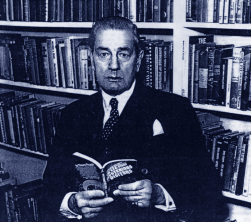 extreme opinions regarding extraterrestrial visitors, UFO’s and the Hollow Earth Theory and wrote a number of books in support of them.
extreme opinions regarding extraterrestrial visitors, UFO’s and the Hollow Earth Theory and wrote a number of books in support of them.
With regard to Atlantis he placed it in the Atlantic with the Azores as its remnants[0769] and claims that those who survived its destruction became what we know as Basques, Berbers and the Celts of Britain and Ireland. He goes further and links Atlantis with Egypt together with its Sphinx and pyramids. Not content with that, he also ventures to associate the Glastonbury Zodiac with Atlantis calling it the Temple of the Stars, the title of one of his books[0770].
While his location theory is fairly standard fare he obviously forgot what he had written,
when eight years later he produced Finding Lost Atlantis Inside the Hollow Earth[778]!!



